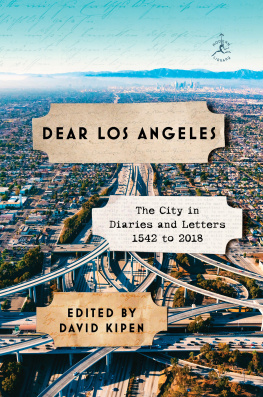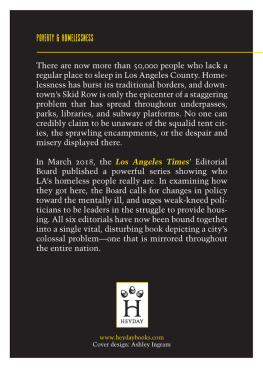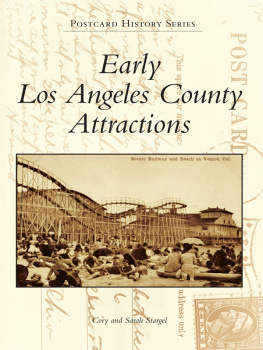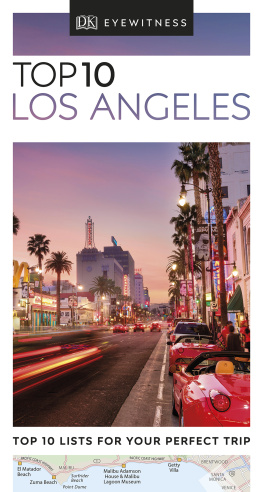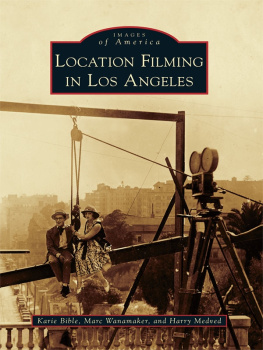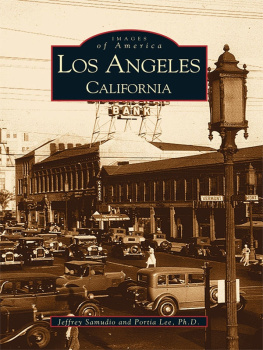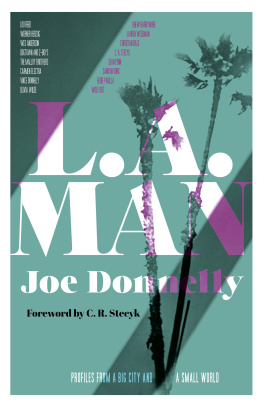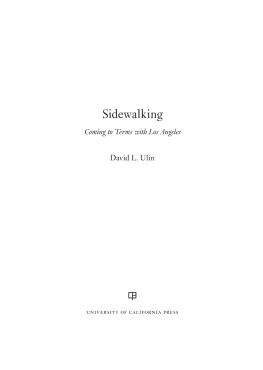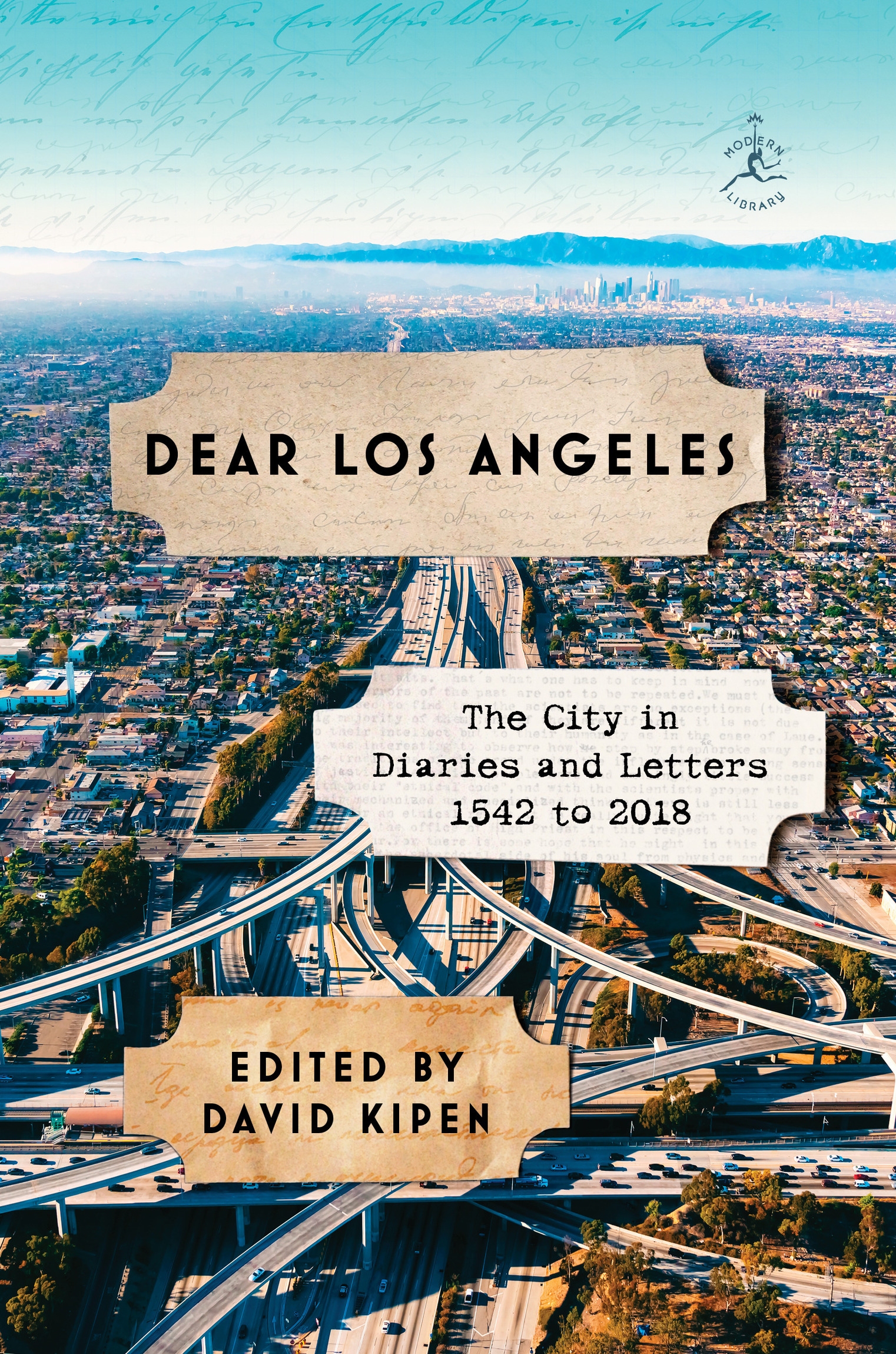All rights reserved.
Published in the United States by Modern Library, an imprint of Random House, a division of Penguin Random House LLC, New York.
M ODERN L IBRARY and the T ORCHBEARER colophon are registered trademarks of Penguin Random House LLC.
Permissions acknowledgments can be found starting on .
Names: Kipen, David, author.
Title: Dear Los Angeles: the city in diaries and letters 1542 to 2018 / edited by David Kipen.
Description: First edition. | New York: The Modern Library, [2018] | Includes index.
Subjects: LCSH: Los Angeles (Calif.)Civilization. | Los Angeles (Calif.)Quotations, maxims, etc. | Los Angeles (Calif.)HistoryChronology. | AuthorsCaliforniaLos AngelesAnecdotes. | PioneersCaliforniaLos AngelesAnecdotes. | CelebritiesCaliforniaLos AngelesAnecdotes.
Classification: LCC F 869. L 85 K 56 2018 | DDC 979.4/94dc23
There it is. Take it.
Real good documentation, this Californiana crap.
P REFACE
This book is a collective self-portrait of Los Angeles when it thought nobody was looking. Joyous, creative, life-giving. Violent, stupid, inhospitable to strangers. Cerebral, melancholy. Funny.
What makes L.A. what it is, anyway? Whats true of Los Angeles that isnt true of anywhere else? In real estate parlance, look at the comparables. Were a movie town, but so is Mumbai. The weathers nice, but you cant buy a decent windowscraper in Honolulu, either. Yes, were so spread out, but have you tried hoofing it across London?
Were the Italy of Americano wait, were the capital of the Third Worldhang on, now were the Ellis Island of the West. What next? Yesterdays hyperbole is tomorrows ephemera. If, in some perverse urban version of orienteering, you blindfolded and dropped me in random cities with just a canteen and a compass, would I even recognize L.A. if I landed in it?
It might take a while. To my blinkered, biased eye, no other town scumbles together the best and worst of every other city in the world as profligately as L.A. does. Its Heidelberg next door to Youngstown, hard by Positano. After all, what do Mumbai and Honolulu have in common? Other than L.A.s resemblance to them, I cant think what. Los Angeles is, for better and worse, the Los Angeles of Los Angeles.
This exceptionalism transcends the old postcard clich of someone picking an orange and throwing a snowball on the same day. My favorite parlor trick is to ask a transplant what they miss most about where theyre from, and then try to come up with a Southern California approximation. It can be done, however dubiously. Nobody need ever feel homesick herealthough, over the following pages, plenty of diarists and correspondents have managed it somehow.
Partly this homesickness stems from the natural propensity of visitors here to travel in packs. Too few of them know the natives, or the gone-natives, who could point them toward consolation. The other excuse for homesickness is that a lot of people enjoy it. When Im out of town, I cherish the occasional pang as much as the next guy. Homesickness reassures us that were right to live where we do instead of wherever weve temporarily shanghaied ourselves to. Wheres my morning Times, my Dodgers broadcast, my jacarandas in June, a decent burrito? Only a return ticket away.
A readers first reaction to Dear Los Angeles might be, whats with the hiccuping, date-by-date structure? Why not just march out all the entries in straightforward chronology, like Bartletts Familiar Quotations does? Who ever heard of a book that inches forward each day, only to ratchet back overnight, just as far or farther? Is this a daybook or the myth of Sisyphus?
The ungrateful answer is, it wasnt my idea. Teresa Carpenters delightful New York Diaries provided the template. Oh, how I fought this. First I tried the traditional Bartletts approach, from 1542 up to the present, until I realized that wed be at page 150 before getting to statehoodi.e., to any diarist that a lay reader had actually heard of. Chucking that, I had the bright idea of starting with the fulcrum year of 1935 and zigzagging back and forth in time from there, but the thing read more like a double-crostic than a book. At one point the manuscript even morphed into a coffee tableready history of the city, complete with elaborate self-amused photo captions that still smirk at me from the depths of my hard drive. (I do miss that shot of Jack Nicholson arriving at the Dorothy Chandler Pavilion, hot off Chinatown and with, yes, the Department of Water and Power Building looming up behind him.)
And then it hit me. I could start with January 1 and just work forward one day at a time, complementary trying to juxtapose a few passages for each date. One step forward, two centuries backthe perennial, quixotic spectacle of L.A. forever finding fresh mistakes to make. In that moment, the whole deck of the book started shuffling into place.
I was so excited, it took days for me to realize Id replicated Teresas schema all but exactly. I hope she hit upon it more efficiently than I did.
The biggest difference between Dear Los Angeles and New York Diaries is the addition of epistolary writing alongside the diary excerpts. Two reasons for this, the first one easy: I just kept finding such terrific L.A. letters, published or unpublished, from people who, in most cases, didnt keep diaries, that I couldnt bear leaving them out.
The other reason is that Manhattan circa 1609 has an unsporting century-and-a-half head start over Los Angeles in the diary-keeping department. Even allowing for that handicap, New Yorks ever-endearing self-absorption gives it an unfair advantage. Historically, more New Yorkers diaries get published, for reasons both justifiable and not. I also suspect that more New Yorkers per capita keep a diary. Something has to pass the time there.
Trash-talking aside, I realized that another form of offhand writing had to pick up the slack. Once I incorporated letters (plus a few irresistible scraps of columnizing, tweets, blogs, and the odd oration)essentially, any kind of L.A. writing with a date on it and no real posterity intendedmy feared undersupply of material became a horn of plenty.
Apart from how its organized, and how letters crashed the diary party, a last unavoidable question to address here is what got in and what didnt. You could spend a lifetime in libraries and archives and barely scratch the surface of whats available. The only constraints are publisher patience and authorial liquidity. Within these parameters, my criteria for including an entry were basically 1) relevance to L.A., and 2) indefensible, undefinable editorial prerogative.
Mostly I liked these entries because they told me something about my city. For reasons hard to quantify, they played off each other in quirky, quarky, covalent ways. Some underscored how far weve come, others how far we still have to go. Ultimately, the entries had a hard time getting in if they didnt make me laugh, or tick me off, or choke me up.

